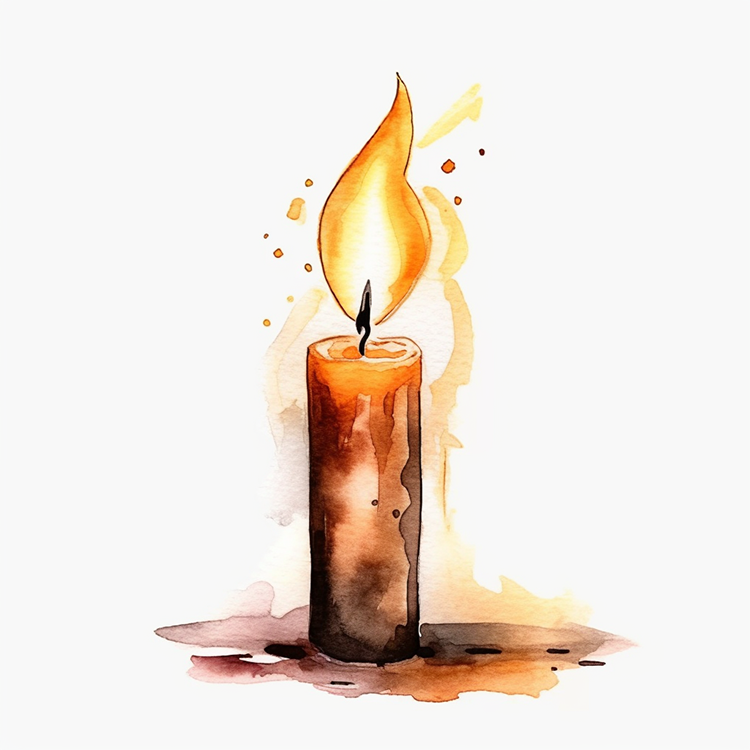How do I meditate on light?

How do I meditate on light?
For beginner-intermediate, I suggest two different meditations: candle gazing (easy) and light visualization (intermediate).
1) Candle Gazing
It’s just as it sounds. Set-up a candle about a meter away so you can comfortably stare at it without straining your eyes or neck. You can also use other bright objects, like an LED light or a lamp. The light should be bright enough to stare comfortably at for a few minutes without straining your eyes but not so bright that you ruin your retinas. All other objects around it should be removed so there’s a plain background. If there are some objects that can’t be moved, reduce color noise as much as possible. Then darken the room as much as possible. Complete darkness is best, but you can do it in a naturally lit room in the afternoon without much difficulty.
As with the other meditations, the fastest way to get it is to do it.
You have a spare candle?
Any meditator worth their salt should! But no, I don’t have one on me. What we’ll use instead is the light from my cell. Works just as well. Doesn’t quite have that spooky, warm ambience but gotta work with what we get. Ready?
Ready.
Sit upright. Relax your shoulders. Rest your gaze on the light in front of you. Don’t strain. Just look at it like you’d take in a beautiful flower from a distance. Rest your gaze there for a minute or two.
When you sense it’s time, gently close your eyes. You should see a purple after-image. Focus on that and hold onto it. It might change shape, move around, dilate or contract. Whatever happens to that image, keep your attention pinned to it. At the same time, though, don’t strain. Over straining might get you quick results in terms of concentration but it’s unsustainable.
Once the after-image fades beyond recognition, open your eyes. Rest your eyes again on the light. Hold it there for a minute or two. Close your eyes and hold onto the after-image. If you lose it, open your eyes again and repeat.
Repeat-repeat-repeat for a few minutes.
That’s it. Simple and straightforward. There’s a lot of subtleties to this practice, as with all of them. For example, as you become more skilled, you will notice another image emerging from within the after-image that is bright, crisp, and stable. This is called a nimitta. When this appears, shift your focus onto it. This will begin another round of back-and-forth in which you go from the image, after-image, and then nimitta. After some time, the nimitta will disappear and you must start back over again. There are stages after the i, but which I won’t go over, otherwise this’ll take us all day. Suffice to say that the main point to bear in mind is that, whatever happens, keep your attention rooted to a visualization. The colors will change. That’s fine. As long as the mind keeps hold of an anchor. Without the anchor, chaos and distraction will ensue.
To summarize the steps here:
- Settle: Sit in front of the candle.
- Rest your gaze: Gently rest your gaze on the flame. Let your eyes settle there for a few minutes without straining or blurring the image. After a minute or two, close your eyes.
- Hold the after-image: Hold onto the after-image or any other image that emerges from it. Don’t strain too hard to keep at it. Just be aware of it and follow it through all of its transformations without interference.
- Repeat: Once the after image fades, open your eyes and repeat steps 2-3. Remember the principle of simple and natural here. No need to over effort it. Just let it unfold naturally.
2) Light Visualization
Light visualization is almost exactly like the candle meditation, it differs in that you visualize the light, rather than using a real light source as a base. Again, let’s learn this first person.
Ready for another round? I’ll keep it brief.
Sure thing, boss.
Close your eyes and visualize a disk of light in front of you. The disk should be about a half meter in diameter at a meter’s distance. It should look like a large, crisp plate of light with no beams coming out from it. Attend to the visual of the disk, even if it seems vague or completely absent. Maintain the light effort to keep the visual. As your thoughts drift and the image fades, return to the image and hold it before your mind’s eye. Continue on like this for another few minutes.
Time’s up. How was that?
A lot harder. At the beginning, the image was clear but then it faded, disappeared, moved around. I never really felt like I had it, unlike with the candle.
That’s normal for beginners when doing visualization practice which is why candle’s a much better option when starting out. It’s not such a big deal if the image fades or moves around. That’s natural when starting out. Just keep that light effort, again-and-again, and the image will gradually sharpen on its own.
There are a few details worth pointing out, though, so as not to be neglected. First, teachers traditionally make the disk large, not a small point as there is with the flame. A large disk’s very difficult for you to overstrain with. Compare looking out at at the ocean to reading the fine print on an advertisement. A big object requires rest. You can’t force or strain yourself to look at the ocean, but you can crunch your gaze down on a fly on the windowsill. Rest is better for sustainability and concentration, as counterintuitive as it sounds. The smallness of the candle is an issue with it as an object, as gung ho meditators often go overboard with it and crash their focus, but how you are you going to make a bright, non-radiant disk with a 50cm diameter? Perhaps your an engineering genius, but for most the candle’s an easier better option.
Although the visualization is more challenging, it does offer one big advantage: you can do it just about anytime, anywhere. If you’re tired at work and need a recharge, are you really going to light a candle in the office or stare at the ceiling lights for 5 minutes? No. The visualization of light is useful because you can do it anywhere with minimal fuss. For practitioners who aren’t proficient in generating the nimitta, however, it’s not an efficient method to develop concentration over a long period of time. Until you gain proficiency in that skill, a candle’s the best option.
And there are no risks here?
There are always risks. If you’re doing this meditation 10+ hours a day for a few days straight, it goes psychedelic real fast, but if you’re doing it for an hour a day, you’ll most likely just be trying to get that after-image stable for a long time, so no worries. There are two issues that a lot of meditators run: 1) overstraining and 2) distracting visuals.
For overstraining, there are a few solutions. One concrete solution is to use a very large light, but it’s such a burden that it’s usually not worth it. Mentally, stick to the principles of keeping things enjoyable, simple, and natural. You'll have to be aware of when your mind's clamping down on the object and make that slight tweak to release the pressure. Also, don't interfere, try to move it around, enlarge it, shrink it, whatever. Just be aware and let it unfold naturally.
For overcoming distracting visuals, this comes down to your own dedication and discernment. As your mind settles, many experience visions. Voices. Old, vivid memories. Psychedellic shapes appearing on the fringes of sight. You can play around with these if you'd like, but it also means abandoning concentration in favor of day dreaming. Day dreaming is fine, but it might not be what you're really after. To overcome the visions, there's no trick. Stick to the object and ignore everything else just as you would thoughts about your upcoming meeting or the argument you had last week with a friend. They can be in the background, coming-and-going as interesting scenery, but if concentration is your goal, stick to the light.
These obstacles shouldn't deter you from exploring light visualization. It's useful for times when you're feeling dull or sleepy. Sometimes napping or passing out for the day's better, but there are often times when a break and recharge is really what's needed. Also, when you find yourself dozing off during meditation, it might be worth it switching to light visualization to brighten things up before continuing on. Whatever the situation, light visualization's a valuable weapon to have in one's arsenal.
